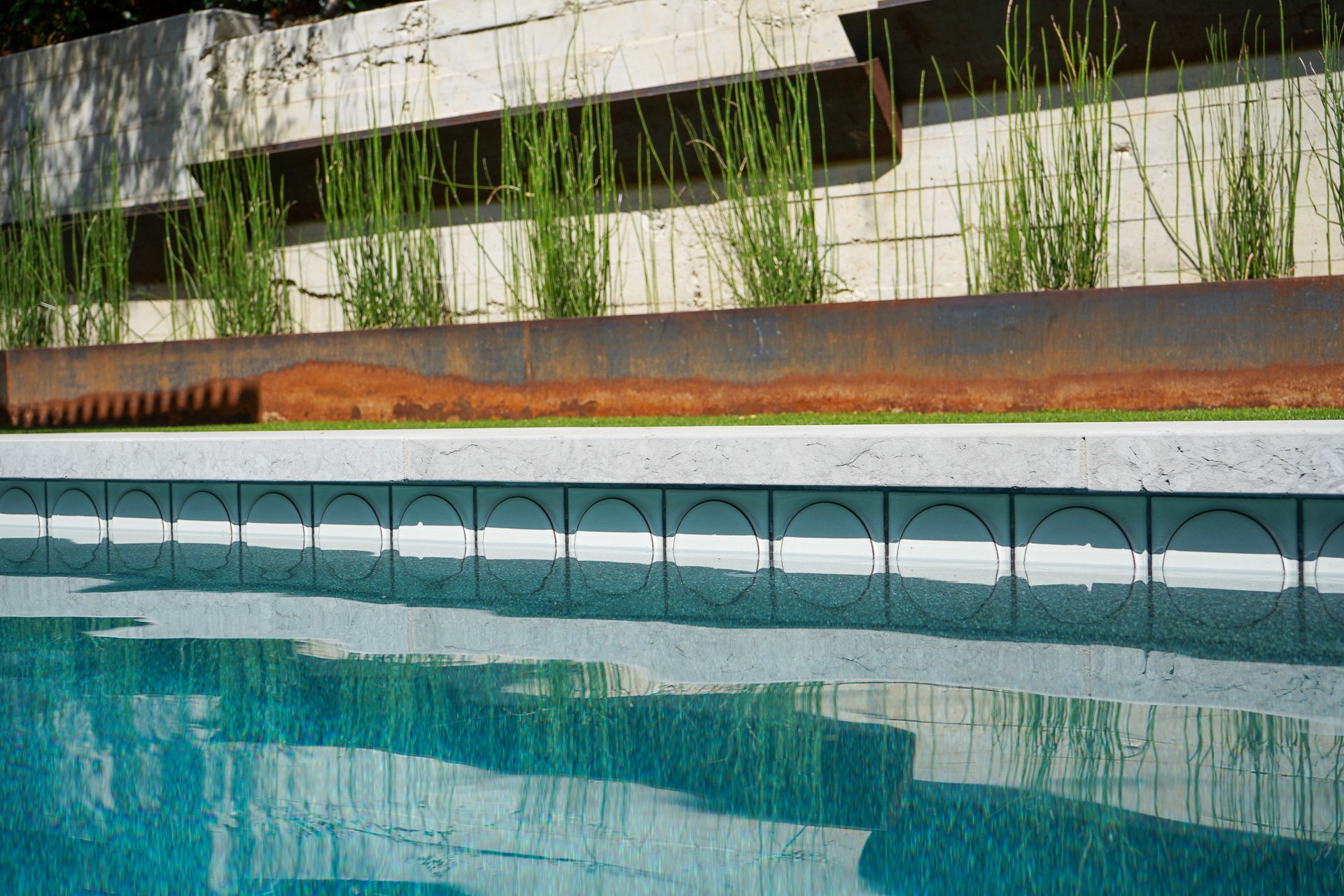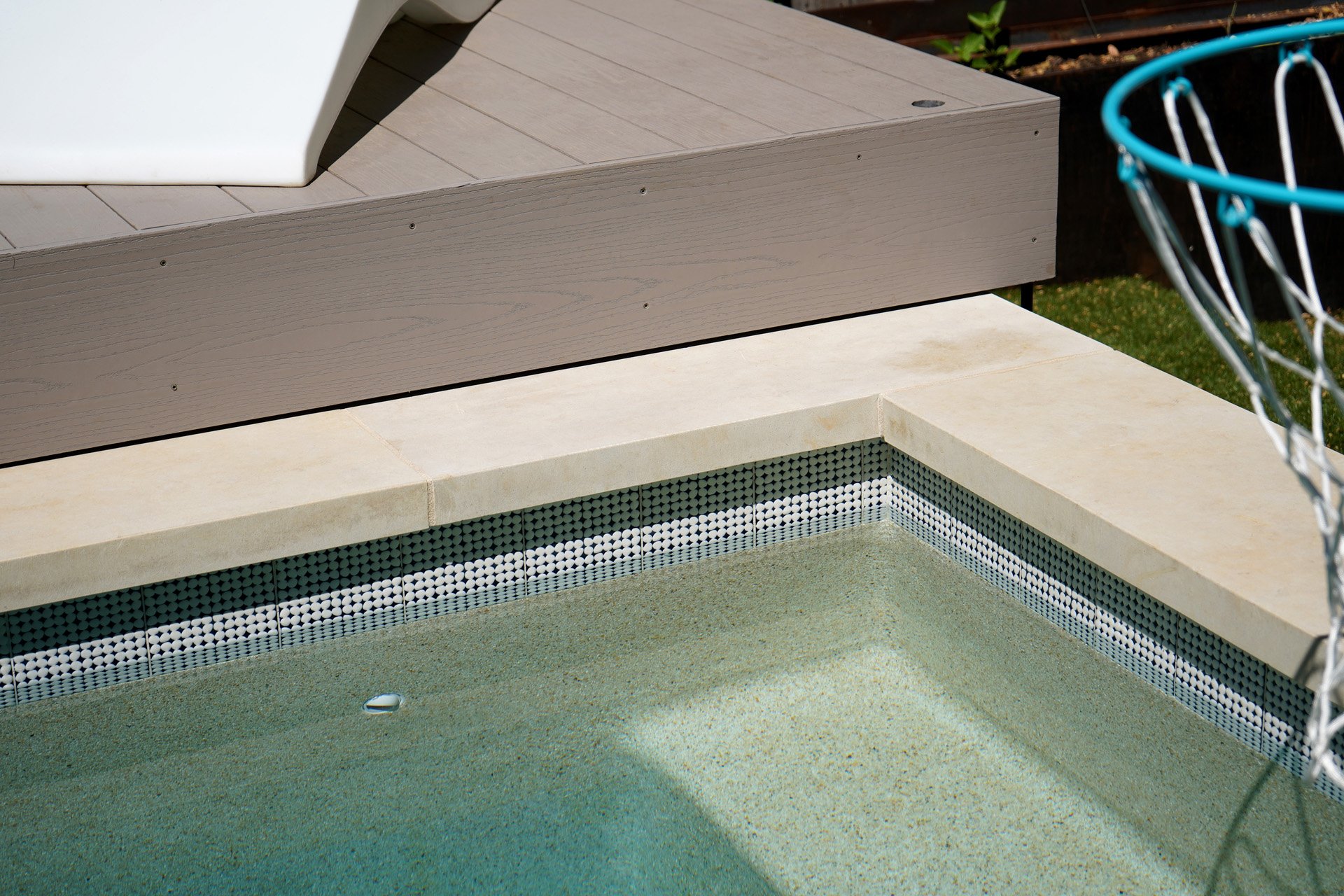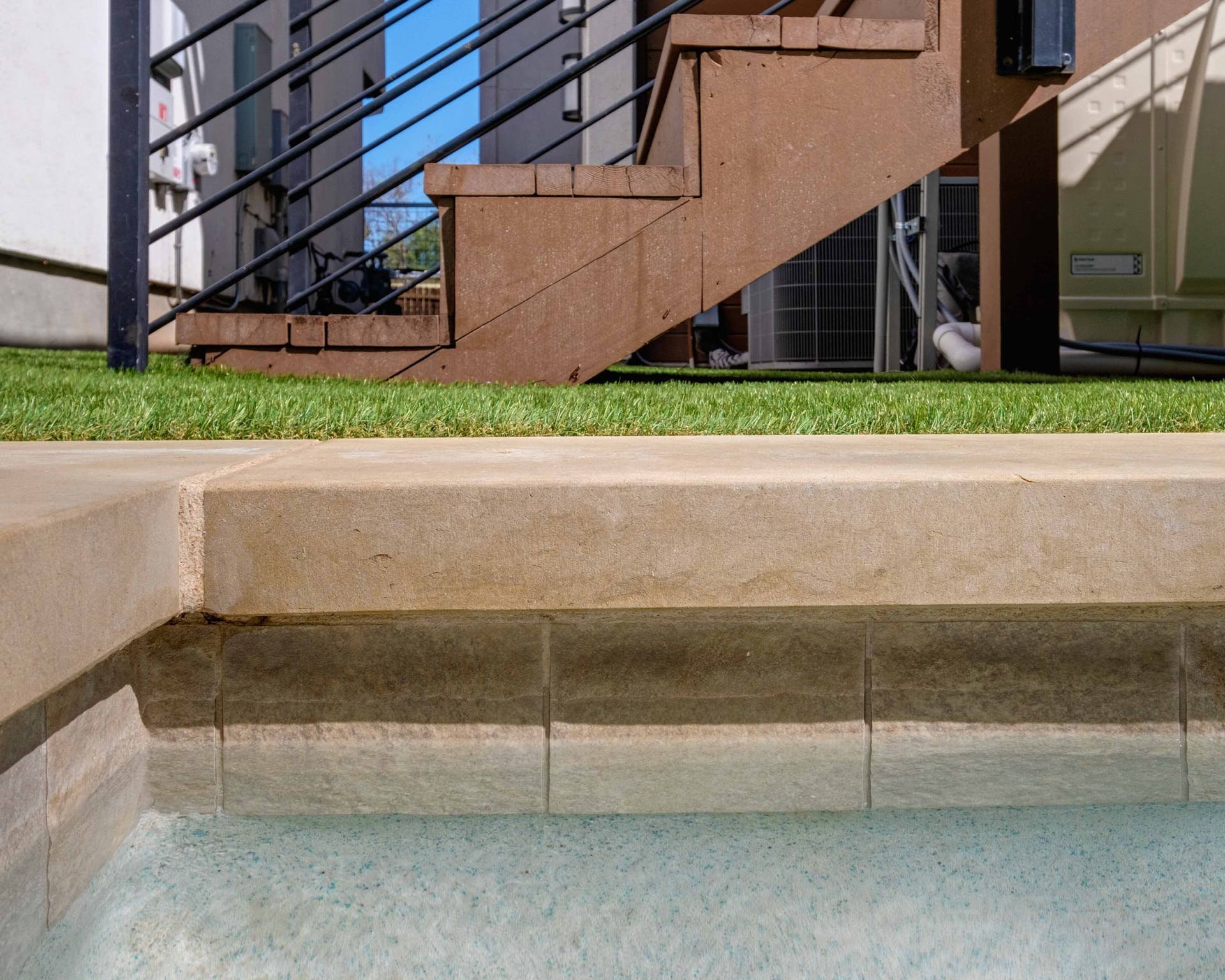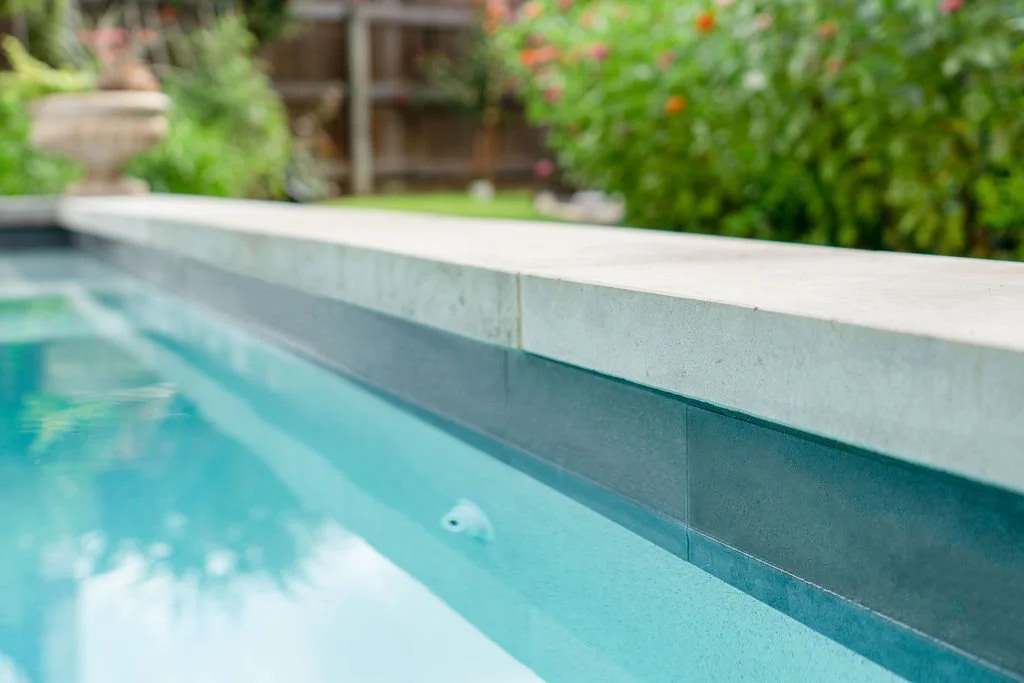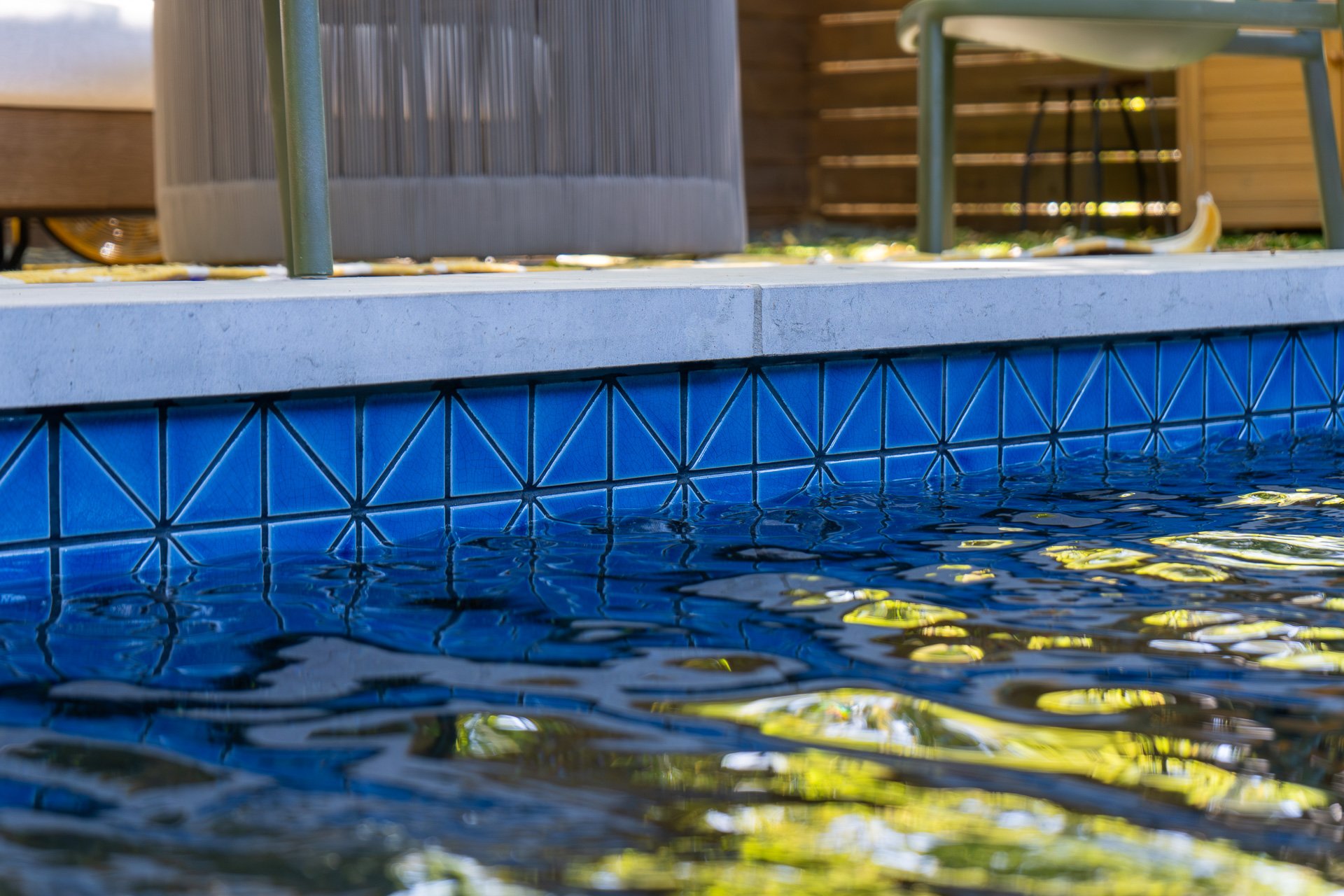What is Pool Coping?
If you're considering the installation of a custom Tiny Pool, you've likely come across the term "coping." Pool coping is an essential feature that not only enhances the aesthetics of your Tiny Pool but also serves important functional purposes.
In this blog post, we’ll provide you with a comprehensive guide to pool coping, including what it is, why it is crucial for concrete pools, and the common materials used for this essential element.
What is Pool Coping?
Pool coping is the material or structure that is installed at the edge or perimeter of a swimming pool. It serves as a protective barrier between the pool's shell and the surrounding deck, patio, or yard. Coping plays a significant role in the overall design, safety, and functionality of your pool area.
Grey/Charcoal Lueders Coping
Why is Pool Coping Important?
Coping is important for several reasons:
Aesthetic Appeal: Coping enhances the visual appeal of your pool area. It provides a clean and finished look, creating a seamless transition from the pool to the deck or patio. This visual distinction can complement the design and style of your pool, adding character and charm to the entire space.
Safety: Coping acts as a safety feature, providing a non-slip surface around the pool. This is especially important to prevent accidents and slips on wet pool decks. The “eased” or slightly rounded edge of the coping material also reduces the risk of injury when swimmers come into contact with the pool's edge.
Protection for the Pool's Structure: Coping serves as a protective barrier, safeguarding the pool's shell from water damage. It prevents water from infiltrating the pool's structure and helps to maintain the structural integrity of the pool over time.
Water Management: Properly installed coping helps manage water runoff, diverting it away from the pool and deck area. This helps prevent erosion, pooling, and other water-related issues that can affect the surrounding landscaping.
Precast Concrete Coping is available in a variety of colors and can be made to mimic natural stone.
Common Pool Coping Materials
Pool coping can be made from various materials, each with its unique aesthetic and functional properties. Some of the most common materials used for pool coping include:
Natural Stone: Natural stones such as granite, limestone, travertine, and slate are popular choices for their durability and timeless beauty. In Texas, you may encounter a lot of Lueders stone used in construction and lanscaping applications, including pool coping. Lueders are our standard material for coping on your new Tiny Pool.
Concrete: Pre-cast or poured-in-place concrete coping is a versatile option. It can be customized to mimic the appearance of more expensive materials like natural stone or brick. It's cost-effective and offers design flexibility. We recommend cast-in-place concrete for saltwater pools.
Other Materials: Brick, Pavers, or Tile can also be used.
Buff Lueders Coping
What exactly is Lueders Stone?
Lueders, also known as Lueders limestone or Lueders sandstone, is a type of natural stone that is commonly quarried and used in Texas and the surrounding regions. It is named after Lueders, a small town in West Texas where it was first discovered.
Lueders stone is valued for its unique characteristics and has been a popular choice for various construction and landscaping applications, including pool coping. It is known for its durability, making it a reliable option for pool coping. It can withstand the elements, including the hot Texan sun, and resist the effects of weathering and erosion.
Our standard choices for Lueders are Charcoal (Grey) or Buff (Cream/Beige). We can help you make the right choice based on your selections for plaster and tile, or your home and backyard’s overall aesthetic. Just let us know if you need our help!
Natural Stone Characteristics
Lueders stone can exhibit natural variations and characteristics such as veining, fossils, and imperfections, and these are considered part of its unique charm.
Veining: Lueders stone can have veining, which adds character and a natural look to the stone. These veins are typically the result of mineral deposits and sedimentary layering that occurred during the stone's formation. The presence of veining can vary from one piece of Lueders stone to another, so you may find stones with pronounced veining and others with minimal or no veining.
Fossils: Fossils can also be present in Lueders stone. This stone is formed from sedimentary deposits, and it may contain embedded fossils of marine life, plant matter, or other organic material. Fossils add a unique and historical aspect to the stone's appearance. Some homeowners and designers specifically seek out Lueders stone with visible fossils to create a distinctive look!
Imperfections: Like most natural stones, Lueders stone can have imperfections or irregularities, which are generally considered part of its natural beauty. These imperfections might include variations in color, texture, or surface irregularities. Some people appreciate the rustic and authentic appearance that these imperfections provide.
Tolerances: The tools and equipment used for cutting and shaping natural stone may have tolerances and limitations, contributing to minor variations in dimension. Though coping thickness may vary up to 1/4”, our skilled installers make every effort to install the stone flush on the top side for a safe and beautiful final result.
In Conclusion
In conclusion, pool coping is a fundamental element for concrete pools that combines both form and function. It enhances the aesthetics of your pool area, ensures safety, and protects the pool's structure.
When you build a new Tiny Pool, our team will walk you through your options to ensure that your pool’s coping complements your pool's design and your yard’s overall vibe!


